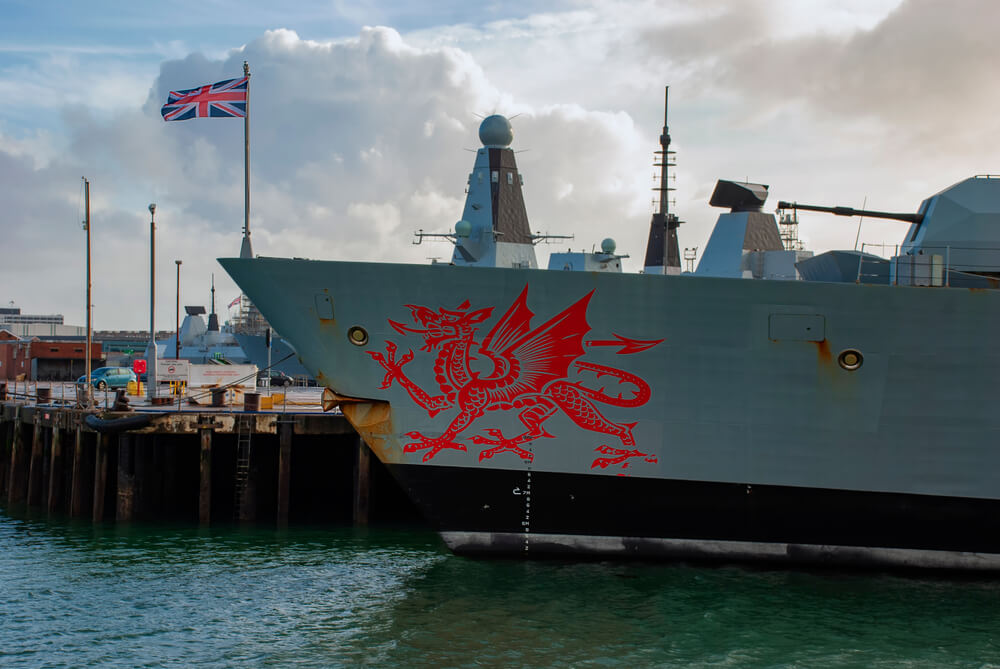U.S. Navy warships are often more expensive than their foreign nation counterparts.
The ship costs of authoritarian nations like the People’s Republic of China are hard to judge or are obscured by direct government subsidy or ownership of shipyards. Those of NATO and other allied states are built, like U.S. ships, in privately-owned yards, or yards where a government only has partial ownership.
The cost of those vessels, often lower than those of comparable U.S. ships, is sometime used to criticize the cost of U.S. shipbuilding. Some of those criticisms, including high labor and supply claim costs, are legitimate, but foreign vessels often turn out to be much cheaper for different reasons. One of those is a lack of full combat capability at delivery and even well into a warship’s full lifecycle. In many cases this is a specific choice made by those nations to keep down costs.
Recent combat events in the Red Sea have put a spotlight on these different practices among allied navies in what they accept as a finished warship. When compared with similar, and admittedly more expensive U.S. warships, the foreign vessels have come up remarkably short in combat capability. These challenges are worth noting when U.S. warships are criticized for their higher costs.
The Danish Iver Huitfeldt class frigates
The Danish Iver Huitfeldt class air defense frigates are perhaps one of the best examples of warships delivered without full combat capability. Entering service in 2012 and 2013, naval experts seized on the Huitfeldt class as an example of what the U.S. could have had in place of the troubled littoral combat ship (LCS) variants. Its chief selling point in the U.S. was always low price, often without an explanation of how the Danes were able to achieve that goal.
The ships were largely built in Lithuania and Estonia in parts, shipped to Odense Shipyard in Denmark and then assembled. Many of the weapon systems on the ship were recycled from other retiring Danish warships to save money. The vessels in the class also experienced integration problems with combat systems going back to 2023. Huitfeldt deployed to the Red Sea in 2024 as an escort for merchant vessels.
The vessel’s combat system was unable to engage Houthi missiles, and the ammunition for its guns (in some cases over 30 years old) was 50% ineffective. In the wake of this failure, the Danish chief of defense was fired and the ship withdrawn from the mission. In terms of class management over time, Huitfeld’s air warfare systems have become so challenging to repair that the Danes have decided to downgrade the ships to just patrol frigates and seek a new class of air defense vessels.
The British Royal Navy Type 45 destroyer
The Type 45 was the replacement design for the long-serving Type 42 class that first saw combat service during the 1982 Falklands War. The Type 45 class was built in the United Kingdom as a high-end warship, but it ran into different financial challenges in the form of austere British defense budgets that limited both the number of ships and the capabilities of several.
One cost savings measure limited the capabilities of HMS Diamond, which was deployed to the Red Sea to defend against Houthi drone and missile attacks in 2024. The Type 45’s capabilities as an air defense ship are superb, but missiles are costly tools for defeating cheap, slow-moving drones. The Type 45’s 4.5-inch gun could engage drones at less cost and at longer ranges than close-in weapon systems, but the Brits withdrew software that enabled the gun to perform the anti-aircraft mission as a cost-savings measure.
The Norwegian F310 Nansen class Frigate
The Norwegian Nansen class frigate is an example where perhaps cost savings in both personnel and equipment contributed to the loss of one of the class vessels.
The price tag for each of these frigates (less than $500 million) was seen as a grand bargain, like that of the Danish Iver Huitfeldt’s compared to U.S. LCS variants that cost much more. They failed multiple key systems tests, raising the price to over $700 million per ship.
Like the Danish ships, some of the cost savings may have had near-deadly effects when one of Nansen frigates collided with a merchant vessel in 2018 and sank. The ship suffered damage and flooding in three of its 13 watertight compartmented spaces, though was expected to remain afloat. But flooding continued through the ship from, a fatal design flaw in the propeller shaft sealing system, according to news reports.
The sinking followed warnings about poor quality control in the Spanish shipyards building the fleet.
The Norwegian investigation of the collision blamed the ship’s inexperienced crew for both the accident and the loss of the ship. but Norway sued the Spanish builder Navantia for 1 billion euros ($1.17 billion) in compensation, citing construction defects. That suit was settled recently through arbitration, but questions remain.
Quest for cost savings can have consequences
None of these examples is cited to embarrass the Danish, British or Norwegian navies. National governments make tough choices regarding the capabilities and limitations of the warships they purchase. These choices are often informed by what legislators believe are hard defense budget limitations.
The U.S. is by no means exempt from these challenges as seen in problems with the Littoral Combat Ship, DDG-1000, the Constellation class frigate and other recent vessel purchases. These examples, however, illustrate that cost savings in the short term are not always the best choice in terms of warship design and capabilities.
Modern warships are expensive, and real cost reductions — such as more efficient use of labor, more commonality of ship parts and use of the federated shipbuilding concept where more of the ship can be built in lower labor cost areas — are needed to ensure that needed types and quantities of ships can be purchased to support strategic and operational needs.
Sometimes a nation gets what it doesn’t pay for when it omits combat systems validation, weapon software upgrades or opts for smaller and less well-trained crews in search of cost savings.







